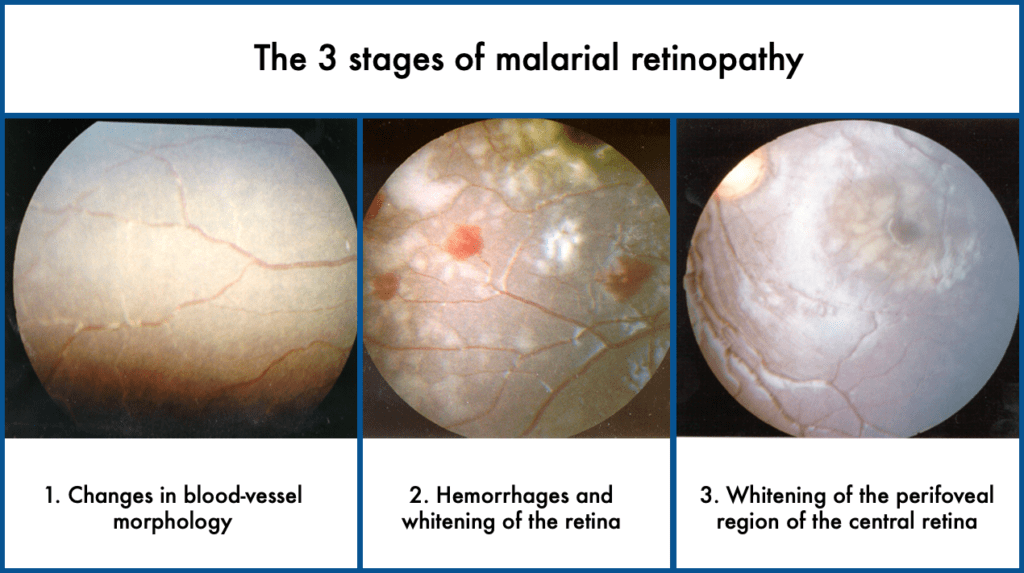Shree Ramakrishna Netralaya (Vashi)
Shah Signature, Above Starbucks, Sector 17,
Vashi, Navi Mumbai - 400705
+91 98198 60879 | [email protected]
Appointment Times
Monday - Saturday :
11:00 am to 07:00 pm
Dr. Vijay Shetty Eye Specialist
Shah Signature, Above Starbucks, Sector 17,
Vashi, Navi Mumbai - 400705
+91 98198 60879 | [email protected]
Monday - Saturday :
11:00 am to 07:00 pm

Shah Signature, Above Starbucks, Sector 17,
Vashi, Navi Mumbai - 400705 +91 98198 60879 | [email protected]
Monday - Saturday :
11:00 am to 07:00 pm

Here’s how malaria can affect eyesight:
Retinal Changes: Malaria can lead to changes in the retina, which is the light-sensitive layer at the back of the eye. These changes can manifest as hemorrhages (bleeding), white patches, or swelling of the retina. These alterations can affect vision and may lead to blurred vision or loss of vision in severe cases.
Optic Neuritis: Inflammation of the optic nerve, known as optic neuritis, can occur due to malaria. This inflammation can cause pain in the eye, reduced visual acuity, and even blindness if not treated promptly.
Cerebral Malaria: In severe cases of malaria, especially cerebral malaria, the brain can be affected leading to seizures, coma, or even death. When the brain is affected, it can indirectly impact vision by affecting the visual pathways or causing swelling in the brain that can press on the optic nerves.
Malarial Retinopathy: This is a specific type of retinal damage caused by malaria, particularly by the Plasmodium falciparum parasite. It can result in retinal whitening, vessel changes, hemorrhages, and cotton-wool spots (small areas of whitening). These changes can impair vision and can be a marker for severe disease.
Conjunctivitis: While less common, some individuals with malaria can develop conjunctivitis, which is inflammation of the outermost layer of the eye and the inner surface of the eyelids. This can cause redness, itching, and discharge from the eyes.

Use mosquito repellents: Apply insect repellents containing DEET, picaridin, or oil of lemon eucalyptus to exposed skin.
Sleep under mosquito nets: Use bed nets treated with insecticides, especially if you’re in areas where malaria is prevalent.
Take antimalarial medication: If you’re traveling to areas where malaria is endemic, consult with a healthcare professional about appropriate antimalarial medication for prevention.
Wear protective clothing: Wear long-sleeved shirts, long pants, socks, and closed-toe shoes to minimize exposure to mosquitoes.
Stay indoors during peak mosquito activity: Mosquitoes that transmit malaria are most active during dawn and dusk, so try to stay indoors during these times or take extra precautions if you need to be outside.
Eliminate breeding sites: Reduce the risk of mosquito bites by eliminating standing water around your living area where mosquitoes breed.
Seek prompt medical treatment: If you suspect you have malaria or are experiencing any symptoms, including visual disturbances, seek medical attention promptly. Early diagnosis and treatment are crucial in preventing severe complications, including those affecting vision.
Experts continue to reiterate that the only way to remove glasses is surgical, but also add that the eye exercises, if done under supervision, are not harmful to eye health. It is therefore up to the individual to try them out, with a healthy dose of skepticism, to see if they work. It is also imperative to keep in mind the fact that there is no definite scientific research that demonstrates eye exercises can effectively reduce or eliminate refractive errors or decrease your dependence on glasses or contact lenses while improving your eyesight. There is no robust scientific evidence to suggest that these techniques work
The environmental factors such as focusing stress and fatigue may benefit from eye exercises.

Conscious blinking is a good idea since our blink rate reduces significantly when sitting in front of the computers, televisions or smartphones. Blinking redistributes the tear film and makes the eyes lubricated, it also provides the eyes some much-needed rest, therefore decreasing fatigue and strain.

The technique of covering both eyes gently with your palms is called palming. It helps by relaxing the eyes and also resulting in redistribution of tears and lubrication of the eye surface. Experts recommend that you must take a deep breath and relax your neck muscles, closing your eyes.

You are supposed to imagine a large “8” figure in front of you, about six feet away, and you must revolve your eyes to trace its shape slowly in the clockwise direction. This process must be repeated for three to five minutes. After this, you must trace the shape of “8” in the anti-clockwise direction for the same duration.